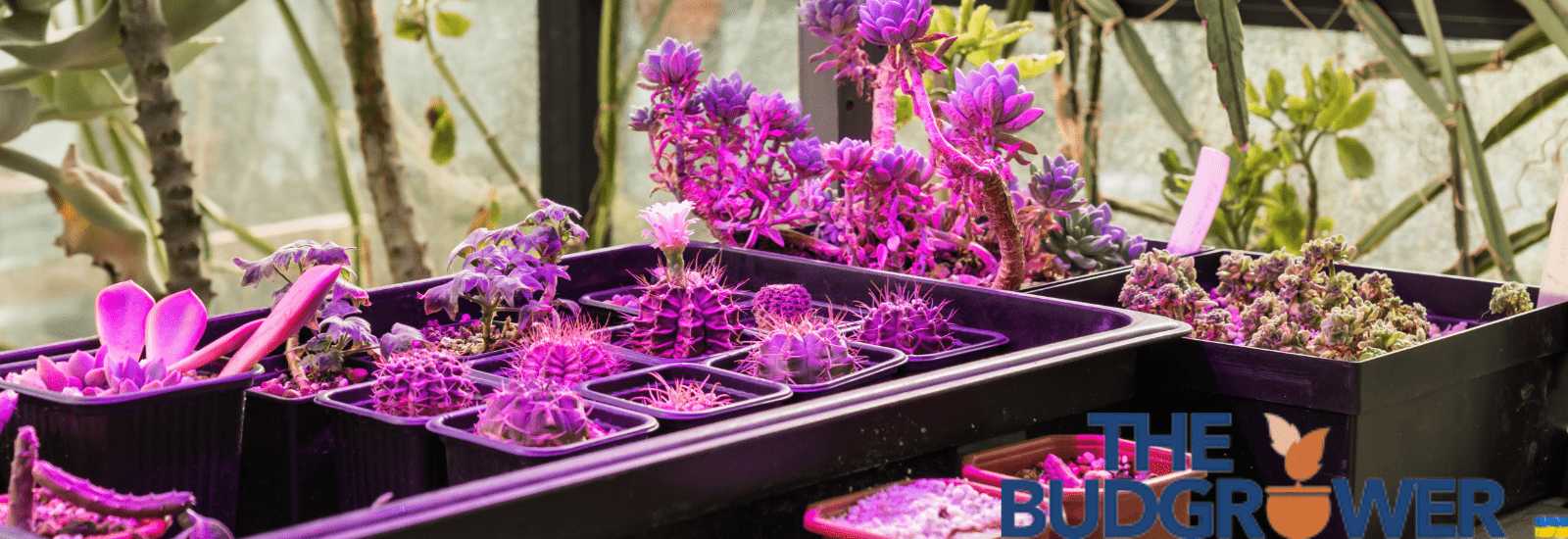What lights do professional growers use? Crops require at least 5,000 lumens of light to mature and produce a satisfactory harvest. In addition to lumen output, cultivators also make their decisions based on setup and operational costs. Here’s a breakdown of LED Grow Lights vs HPS.
HPS vs LED Grow Lights
Can LED replace HPS?
A majority of indoor farmers prefer LED grow lights because they outperform High-Pressure Sodium bulbs by at least 50%. On the other hand, HPS grow lights are a feasible option for crops that require little variation in UltraViolet (UV) light to perform photosynthesis or nurture flowering. This is why some commercial and small-scale cultivators prefer HPS to LED grow lights to save on costs.
Purchase and operational costs are crucial factors when analyzing LED grow lights vs HPS. LEDs cost twice as much as HPS grow lights and this makes it hard for the diodes to kick out High-Intensity Discharge (HID) bulbs from the market. Cultivators growing in frosty climates use HPS to generate warmth consistently for the crops. Optimum temperature enables plants to perform photosynthesis and absorb nutrients through the roots.
What LED Grow Light Is Equivalent to 600W HPS?
A cultivator considering switching to LED should purchase a 200-watt panel to replace a 600-watt HPS grow light. LED panels produce 90,000 lumens just like the 600W HPS bulb while reducing electricity consumption by 50 percent. The farmer stands to gain a higher return on investment by replacing the HPS with an LED grow light.

What LED Is Equivalent To A 1,000W HPS?
It’s advisable to use a 400-watt LED panel when replacing a 1,000-watt HPS grow light. It’s not unusual, however, to come across 300-watt LED grow lights that produce over 110,000 lumens.
This range of LED grow lights produces less heat than HPS bulbs and is designed for 4 x 4 grow tents.
LED vs HPS Grow Lights: Operation Costs
Below is a step-by-step comparison of both sources of light.
Cost Of Purchase
High-Pressure Sodium lights are highly affordable for individual and commercial farmers compared to LED grow lights. On average, a 400-watt LED panel costs around $600-$700 while an HPS bulb with similar output ranges from $250-$300.
Electricity Consumption
Horticultural companies in the 70s gravitated towards LED grow lights since the panels consumed only a third of the electrical energy used by HPS bulbs. In addition to lower power consumption, LEDs generate a higher return on investment because they stimulate a higher rate of photosynthesis for crops, leading to better harvests than HPS grow lights.
Heat Regulation
HPS grow lights emit 50°F more heat than LEDs. This difference in temperature compounds when several crops are grown under HPS bulbs. The cultivator usually has to purchase an industrial air conditioner to cool down the grow room. The crops also face a higher risk of dehydration during hot summers.
LED grow lights emit less heat and this is why most grow rooms and tents use a set of fans to provide air circulation and regulate temperature. The low heat emission makes LEDs safe for nurturing clones and seedlings.
Pros Of HPS Grow Lights
1. Affordable Source of Full Spectrum Ultraviolet Light
High-Pressure Sodium bulbs have built a strong reputation among horticultural farmers since the 50s. Its ability to provide powerful full-spectrum UV light makes it more reliable than fluorescent and metal halide bulbs. Some grow kits even come with HPS grow lights as an alternative to costly LED panels.
2. Provide Deep Penetration Of Light
Crops need sufficient UV light covering top to bottom to maximize yield production. HPS grow lights are reliable for growing plants that reach up to six feet tall since the bulbs emit powerful omnidirectional wavelengths. Foliage located at the bottom of the canopy benefits from such light and this results in a healthy plant.
3. Improves Microbial Activity in The Soil
Microbes reside in the soil and are beneficial to farmers because these tiny organisms break down manure into nutrients that are easily absorbed by plant roots. Optimum warmth inside the soil stimulates microbes to perform their role more efficiently. The heat emitted by HPS bulbs enables the soil to retain warmth consistently.
Cons of HPS Grow Lights
1. Consumes More Growing Space Than LEDs
Cultivators are keen to maintain a three to four-foot gap between crops and overhead HPS bulbs to protect the plants from heat stress. This shortcoming makes it difficult to maximize returns on investment since the farmer wastes a lot of space by preventing plants from getting taller and producing more harvests at the apex.
2. Large Scale Cultivators Require Expensive Dehumidification
Cultivators running large grow rooms or tents fitted with HPS grow lights also have to spend extra money on dehumidification. As the plants transpirate, humidity levels increase significantly. The heat emitted by the HPS bulbs combined with the increased humidity can create a conducive environment for mold infestation. Large dehumidifiers can solve the humidity problem, however, this translates to increased overhead costs.
3. Requires Experienced Cultivators For Confined Grow Spaces
Nurturing crops inside a grow tent requires a keen eye on humidity and temperature control. It takes several years of cultivation to know how to control these variables, especially while using HPS grow lights. Unlike LEDs, HPS bulbs have little room for error. If the cultivator lets the plants grow tall, the canopies will wilt due to overheating.

What lights do professional growers use? Crops require at least 5,000 lumens of light to mature and produce a satisfactory harvest. In addition to lumen output, cultivators make decisions based on setup and operational costs. Here’s a breakdown of LED Grow Lights vs HPS.
HPS vs LED Grow Lights
Can LED replace HPS?
Indoor farmers often lean towards LED grow lights due to their superior performance, outshining High-Pressure Sodium bulbs by a significant 50%. However, it’s important to note that HPS grow lights are a viable choice for crops that thrive under consistent UltraViolet (UV) light conditions, such as those needed for photosynthesis or flowering. This is why some commercial and small-scale cultivators opt for HPS over LED grow lights, considering the potential cost savings.
Purchase and operational costs are crucial factors when analyzing LED grow lights vs. HPS. LEDs cost twice as much as HPS grow lights, making it hard for the diodes to kick out High-Intensity Discharge (HID) bulbs from the market. Cultivators growing in frosty climates use HPS to generate consistent warmth for crops. The optimum temperature enables plants to perform photosynthesis and absorb nutrients through the roots.
What LED Grow Light Is Equivalent to 600W HPS?
A cultivator considering switching to LED should purchase a 200-watt panel to replace a 600-watt HPS grow light. LED panels produce 90,000 lumens, just like the 600W HPS bulb, while reducing electricity consumption by 50 percent. By replacing the HPS with an LED grow light, the farmer stands to gain a higher return on investment.
What LED Is Equivalent To A 1,000W HPS?
It’s advisable to use a 400-watt LED panel when replacing a 1,000-watt HPS grow light. It’s not unusual, however, to come across 300-watt LED grow lights that produce over 110,000 lumens.
This range of LED grow lights produces less heat than HPS bulbs and is designed for 4 x 4 grow tents.
LED vs HPS Grow Lights: Operation Costs
Below is a step-by-step comparison of both sources of light.
Cost Of Purchase
High-pressure sodium lights are highly affordable for individual and commercial farmers compared to LED grow lights. On average, a 400-watt LED panel costs around $600-$700, while an HPS bulb with similar output ranges from $250-$300.
Electricity Consumption
Horticultural companies in the 70s gravitated towards LED grow lights since the panels consumed only a third of the electrical energy used by HPS bulbs. In addition to lower power consumption, LEDs generate a higher return on investment because they stimulate a higher rate of photosynthesis for crops, leading to better harvests than HPS grow lights.
Heat Regulation
HPS grow lights emit 50°F more heat than LEDs. This difference in temperature compounds when several crops are grown under HPS bulbs. The cultivator must usually purchase an industrial air conditioner to cool down the grow room. The crops also face a higher risk of dehydration during hot summers.
LED grow lights emit less heat, which is why most grow rooms and tents use fans to provide air circulation and regulate temperature. The low heat emission makes LEDs safe for nurturing clones and seedlings.
Pros Of HPS Grow Lights
1. Affordable Source of Full Spectrum Ultraviolet Light
High-pressure sodium bulbs have built a strong reputation among horticultural farmers since the 50s. Its ability to provide powerful full-spectrum UV light makes it more reliable than fluorescent and metal halide bulbs. Some grow kits even come with HPS grow lights as an alternative to costly LED panels.
2. Provide Deep Penetration Of Light
Crops need sufficient UV light covering top to bottom to maximize yield production. HPS grow lights are reliable for growing plants up to six feet tall since the bulbs emit powerful omnidirectional wavelengths. Foliage located at the bottom of the canopy benefits from such light, resulting in a healthy plant.
3. Improves Microbial Activity in The Soil
Microbes reside in the soil and benefit farmers because these tiny organisms break down manure into nutrients easily absorbed by plant roots. Optimum warmth inside the soil stimulates microbes to perform their role more efficiently. The heat emitted by HPS bulbs enables the soil to retain warmth consistently.
Cons of HPS Grow Lights
1. Consumes More Growing Space Than LEDs
Cultivators are keen to maintain a three to four-foot gap between crops and overhead HPS bulbs to protect the plants from heat stress. This shortcoming makes it difficult to maximize returns on investment since the farmer wastes a lot of space by preventing plants from getting taller and producing more harvests at the apex.
2. Large Scale Cultivators Require Expensive Dehumidification
Cultivators running large grow rooms or tents fitted with HPS grow lights must also spend extra money on dehumidification. As the plants transpirate, humidity levels increase significantly. The heat emitted by the HPS bulbs and the increased humidity can create a conducive environment for mold infestation. Large dehumidifiers can solve the humidity problem, which translates to increased overhead costs.
3. Requires Experienced Cultivators For Confined Grow Spaces
Nurturing crops inside a grow tent requires a keen eye on humidity and temperature control. It takes several years of cultivation to control these variables, especially using HPS grow lights. Unlike LEDs, HPS bulbs have little room for error. If the cultivator lets the plants grow tall, the canopies will wilt due to overheating.
Pros of LED Grow Lights
1. Enables Cultivators To Optimize On Vertical Space
LED grow lights suspended above crops require a distance of two feet to protect the canopies from excess heat. Compared to HPS bulbs, the reduced heat production allows plants to grow much taller and produce higher yields. It’s one of the reasons why LED growers enjoy harvests that exceed HPS production by at least 50 percent.
2. Maximizes Space and Light Usage
Cultivators using LED grow panels switch from broad-spectrum white UV to deep purple light to promote flowering. This is based on scientific research that explains how plants utilize different wavelengths of light as they transition from seedlings to mature crops. Stimulating the rate of photosynthesis enables the crops to direct energy and nutrients toward bud sites, contributing to impressive harvests.
Switching wavelengths enables crops to maximize the lumens the LED grow lights produce. This allows the farmer to harvest higher yields per square foot of growing space than HPS bulbs. In other words, LED grow lights deliver a better ROI since they enable plants to maximize lumens and run on one-third of the electricity required by HPS.
3. LED Grow Lights Are Compatible With Remote Control
Technology has made indoor cultivation much easier thanks to growing apps that enable cultivators to control certain variables remotely. This innovation leans heavily towards growing tents or rooms with LED grow lights. It makes it easier for first-time growers to understand how crops respond to various wavelengths and enables them to set light cycles through the phone or an iPad.
Cons Of LED Grow Lights
1. Transitioning From HPS to LED Is Expensive For Commercial Growers
While it’s true that LED grow lights require only one-third of the power used by HPS bulbs, the purchase costs are expensive. A broad spectrum 720-watt commercial LED grow panel costs $600, yet the grower needs about three to four panels to replace an HPS system.
2. High Volume Of Counterfeits In The Market
There’s hardly any barrier to entry for manufacturers or retail sellers in the horticultural lighting market. Dishonest dealers publish fake product reviews online and use cheap pricing strategies to con farmers by selling them inferior-quality LEDs. These unfamiliar brands also share scarce information regarding the manufacturer or country of origin. In addition, cultivators also have to watch out for replica brands mainly advertised on social media.
Conclusion
Looking back at the pros and cons of each device, the diodes emerge on top as far as LED Grow Lights vs. HPS go. Unfortunately, excessive heat, which plagues HPS lights, affects yields because it limits the crop’s vertical growth. Warehouse spaces are costly, so only a few growers can lease them.
The ability to provide a combination of light spectrums promotes bud growth at a higher rate than HPS grow lights. Despite the recent upgrades implemented by High-Intensity Discharge (HID) bulb manufacturers, the LED’s grip on the market remains untouchable. This ability to promote photosynthesis at the highest level motivates customers to pay top dollar for LED grow lights.
LEDs maximize ROI by enabling each plant to produce a higher yield per square foot than HPS grow lights emitting similar lumens. When you consider the low energy consumption, it makes financial sense to invest in LED grow lights.
To check out all our available lights, check out our Grow Lights page.






